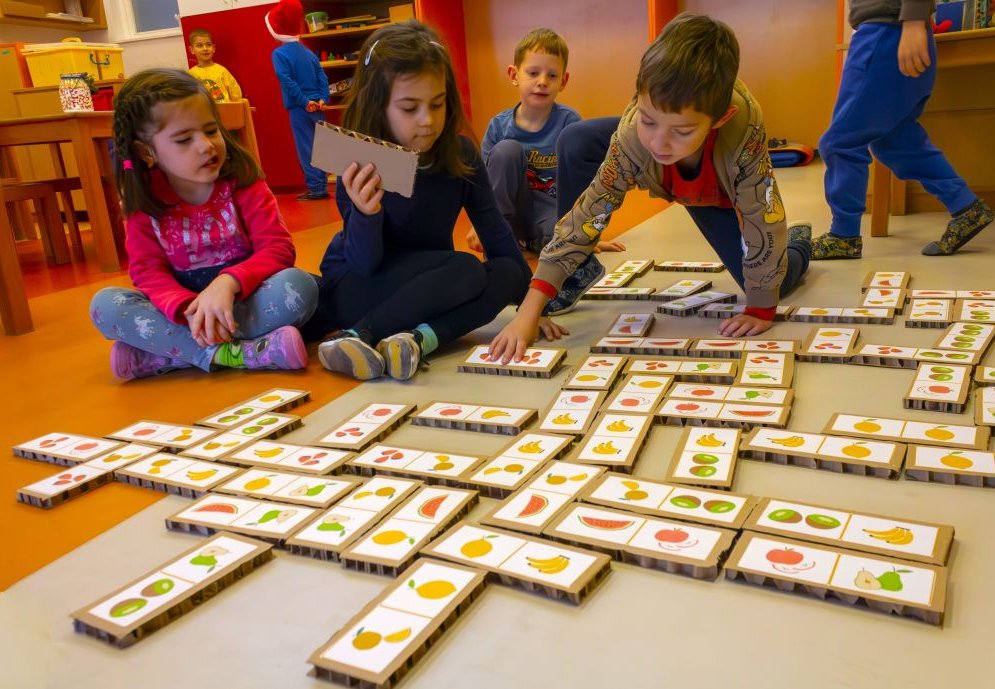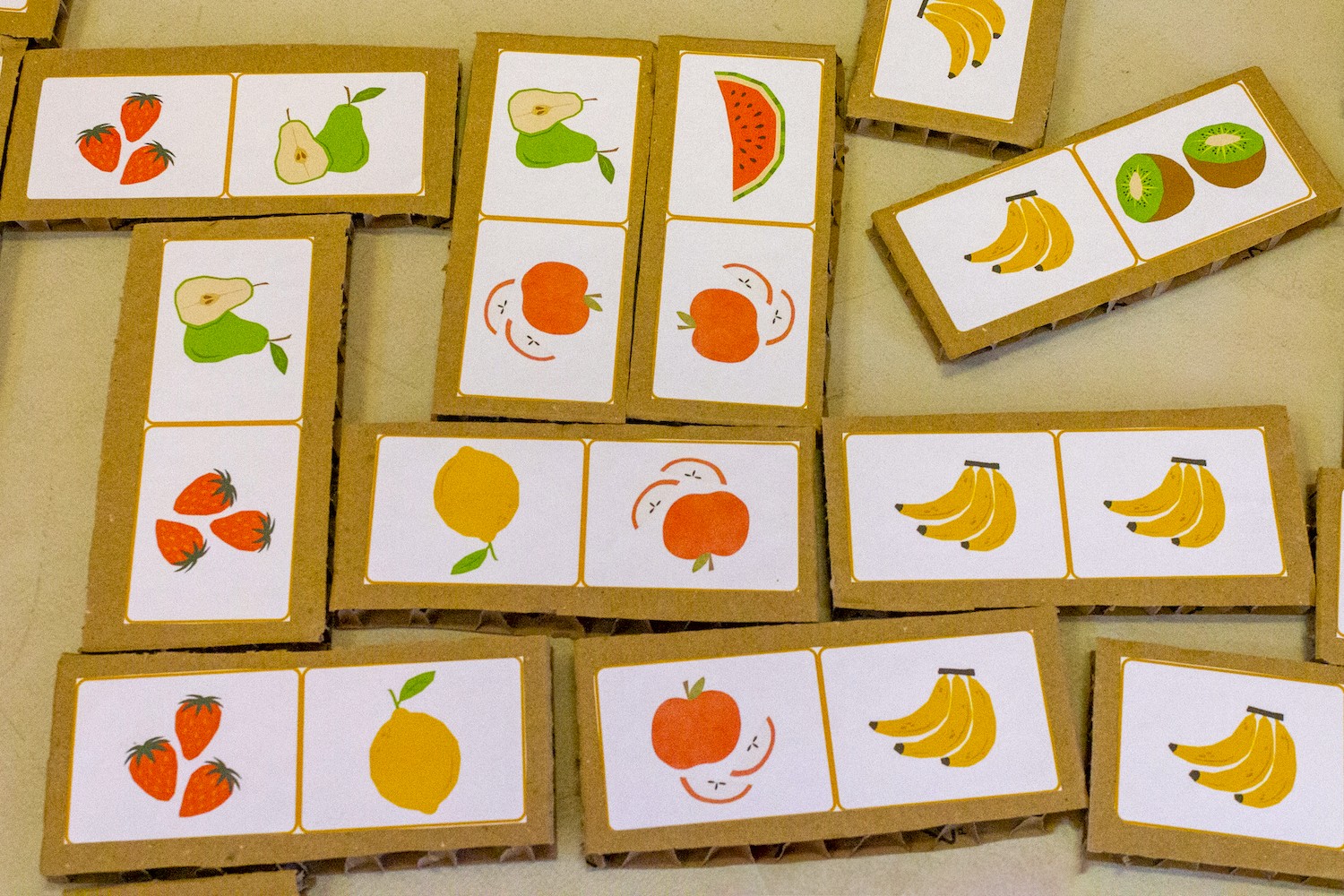

Sensory education with food dominos
A sensory learning game to enable pupils to discover more about the food they like, and try something new!
Učni rezultati
- children will love eating vegetables and fruit, for life
- pupils are curious about new tastes and more willing to try them – this is how we fight neophobia (fear of something new)
- children can describe the characteristics of fruit and vegetables
- children can describe what they sense and their feelings about it
- children learn how to say no/ I don´t want to in a polite way
- better vocabulary
- get to know healthy eating that can change their food choices
- children understand their likes and dislikes and respect those of others
- children will learn about different materials, such as clay, wood, and cardboard and their characteristics.
Zahtevan čas
1 hour
Orodja ali oprema
- Food domino cards, made in kindergarten or first grade in school.
- Different fruit and vegatables.
Opis aktivnosti
The activity is comprised of two activities: sensory food education and fruit and vegetable dominos. Children see the domino game with fruit and vegetable as a friendly and fun activity, where they just observe and match fruit or vegetables according to its colours or taste.

Activity 1: Make your own fruit and vegetable dominos
The pedagogue will work together with the children to prepare a set of domino cards.
They can be made of different materials (cardboard, wood, clay etc). Instead of dots, they put pictures of a different fruit or vegetables on the domino. Older children can help the pedagogue to draw and colour the fruit or vegetable.
The more fruit and vegetables you have, the more complex the game is for the children and the more they expand their taste! Dominos can be played in different ways:
- matching the same fruits together,
- matching the same colours together or
- matching similar tastes together (the most advanced version)
In time when children play dominos, you can introduce them to some of new fruits and vegetables with the help of sensory education. The more fruits and vegetables they will know, the better they can play.
Activity 2: Sensory education
Explore the fruit and vegetable together with children with the use of all senses!
Children will also find out their own personal food preferences and discover new foods which they may not have tried at home. When children learn through play they build familiarity, which can lead to an increased acceptance of new foods. They can also find out that the food can be more appealing in a new environment, when surrounded with friends and a pedagogue, even though they didn´t like it at home.
Don´t force children to try new food. Use two golden rules from sensory education programme TastEd, UK: no one has to try and no one has to like.
Talk with children about fruit and vegetables: the colours, texture, smell, and taste. How would they describe it? What do they like about their favourite fruit?
With sensory education, they learn about the characteristics of fruits and vegetables without the pressure of eating them. Read the example of how to discuss new foods with pupils in the additional materials.
Namigi kako uvesti temo v šolski kurikul
This activity can be linked with many curriculum activities, from society, language and nature.
Society: children get used to having choices, they learn about themselves and other people, learn about their family's habits, they develop good eating habits.
Language: children expand their vocabulary, talk about food and habits, they know how to politely say no.
Environment/nature: children learn how their habits affect their health, they learn about five senses and experience them, they get to know different types of fruits and vegetables. When making dominoes with the pedagogue, children get to know different materials, their origins and characteristics (cardboard, clay, different materials).
Additional materials:
TastEd, Sensory Food Education. Department for Education. Help for Early Years Providers. Link: https://help-for-early-years-providers.education.gov.uk/get-help-to-improve-your-practice/sensory-food-education
Sensory education activity: Touch, What´s in the sock: https://www.tasteeducation.com/wp-content/uploads/2022/02/EYFS-Lesson-8-TOUCH-Whats-in-the-Sock_-Lesson-Plan-1.pdf
Sapere, sensory food education with videos, link: https://www.sapere-association.com/sensory-education/sapere-play
